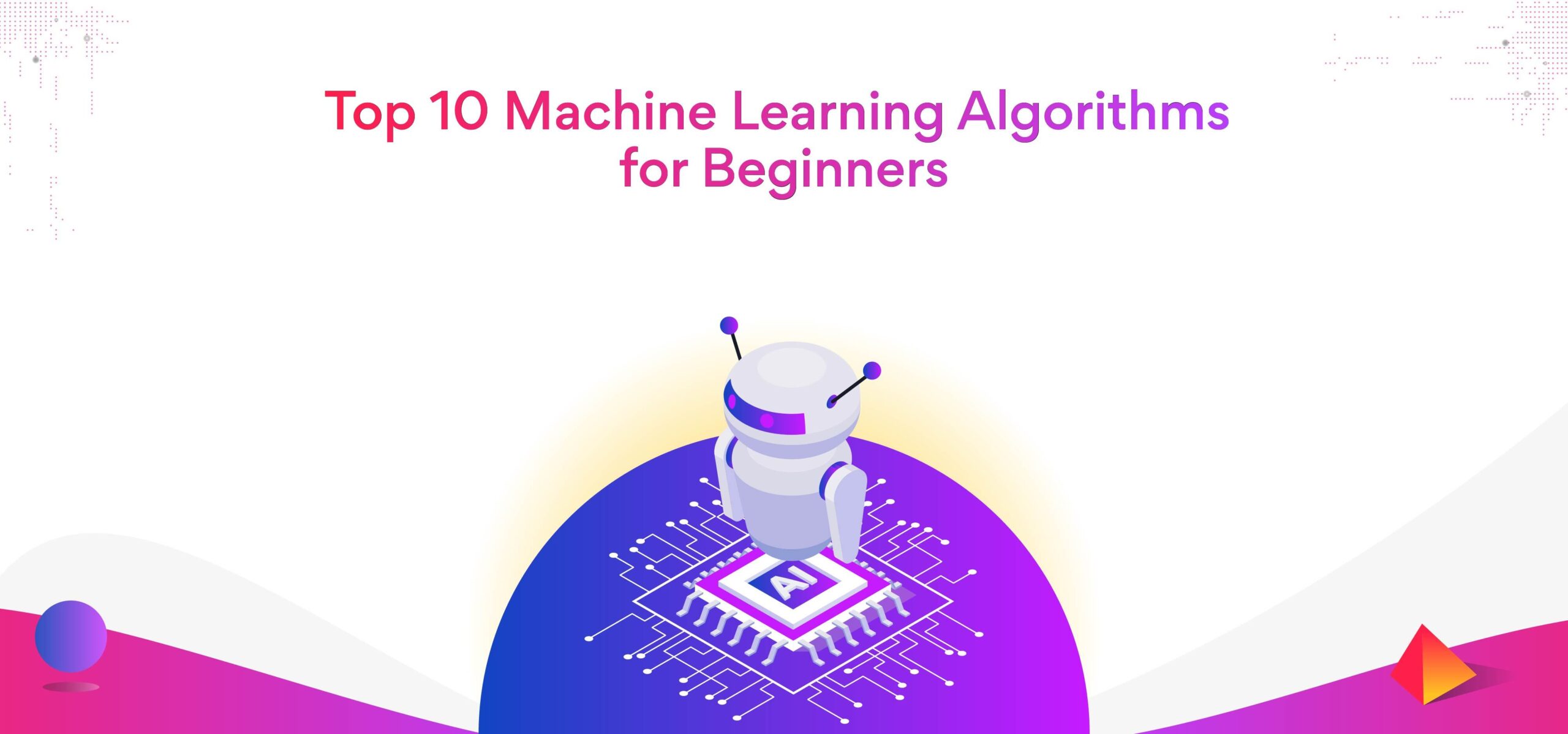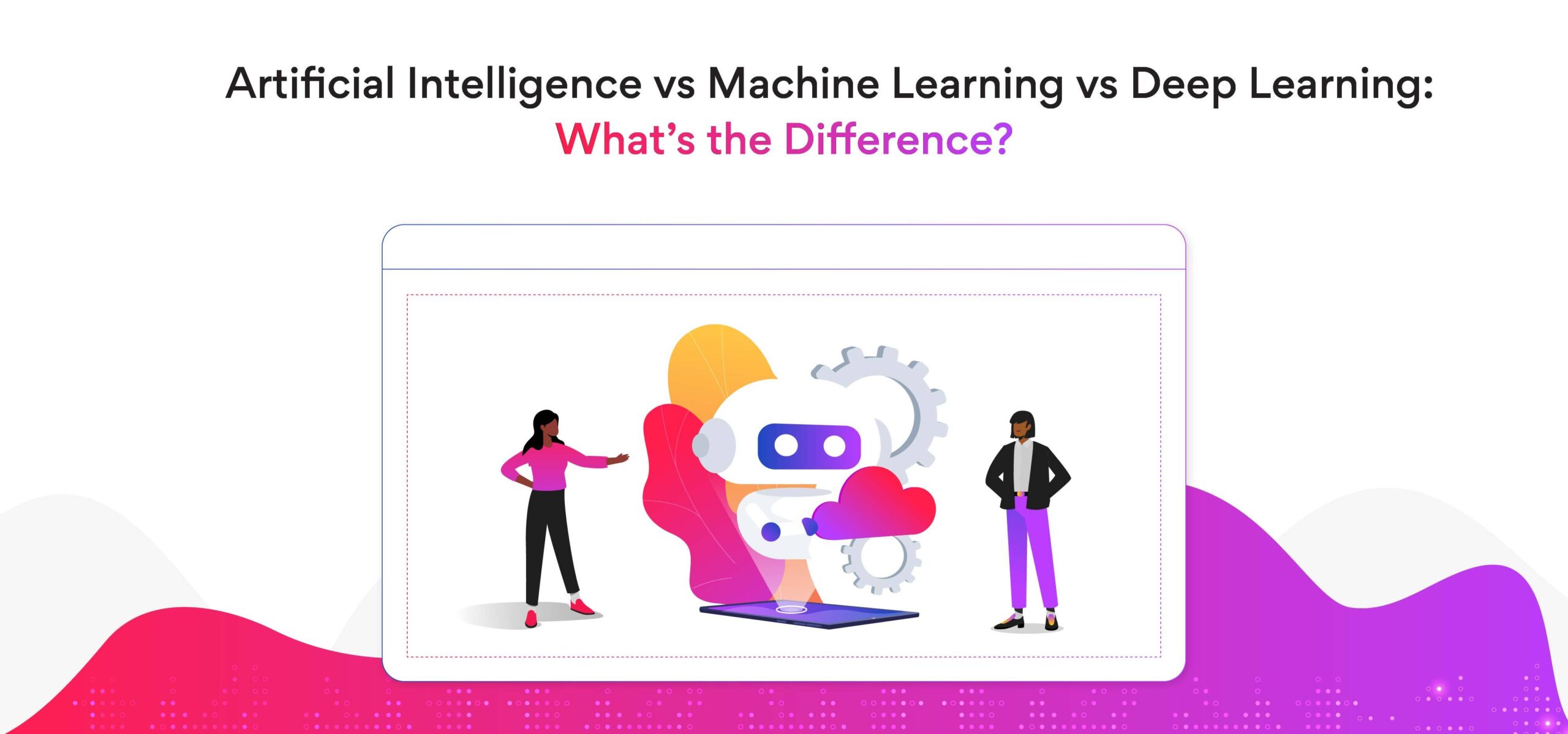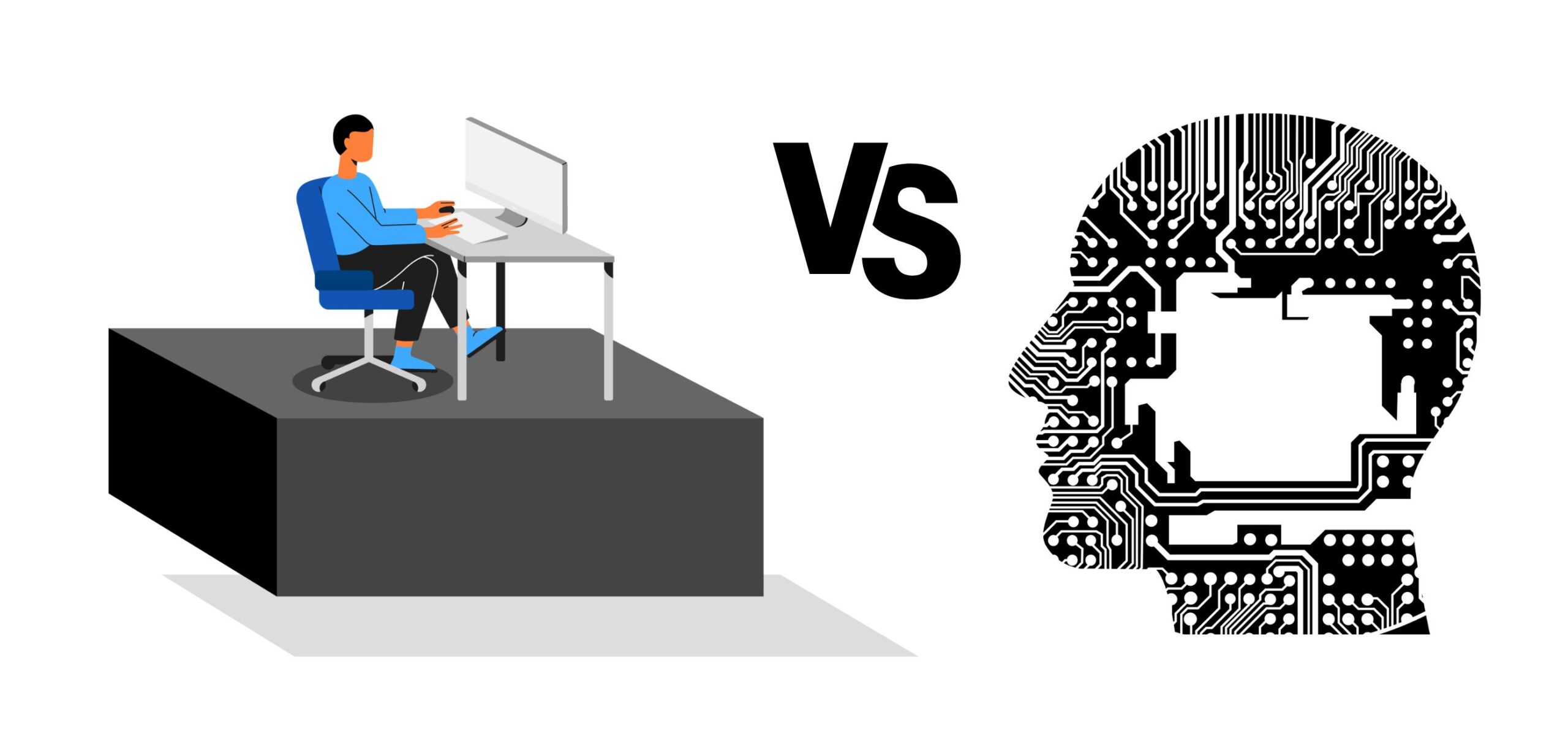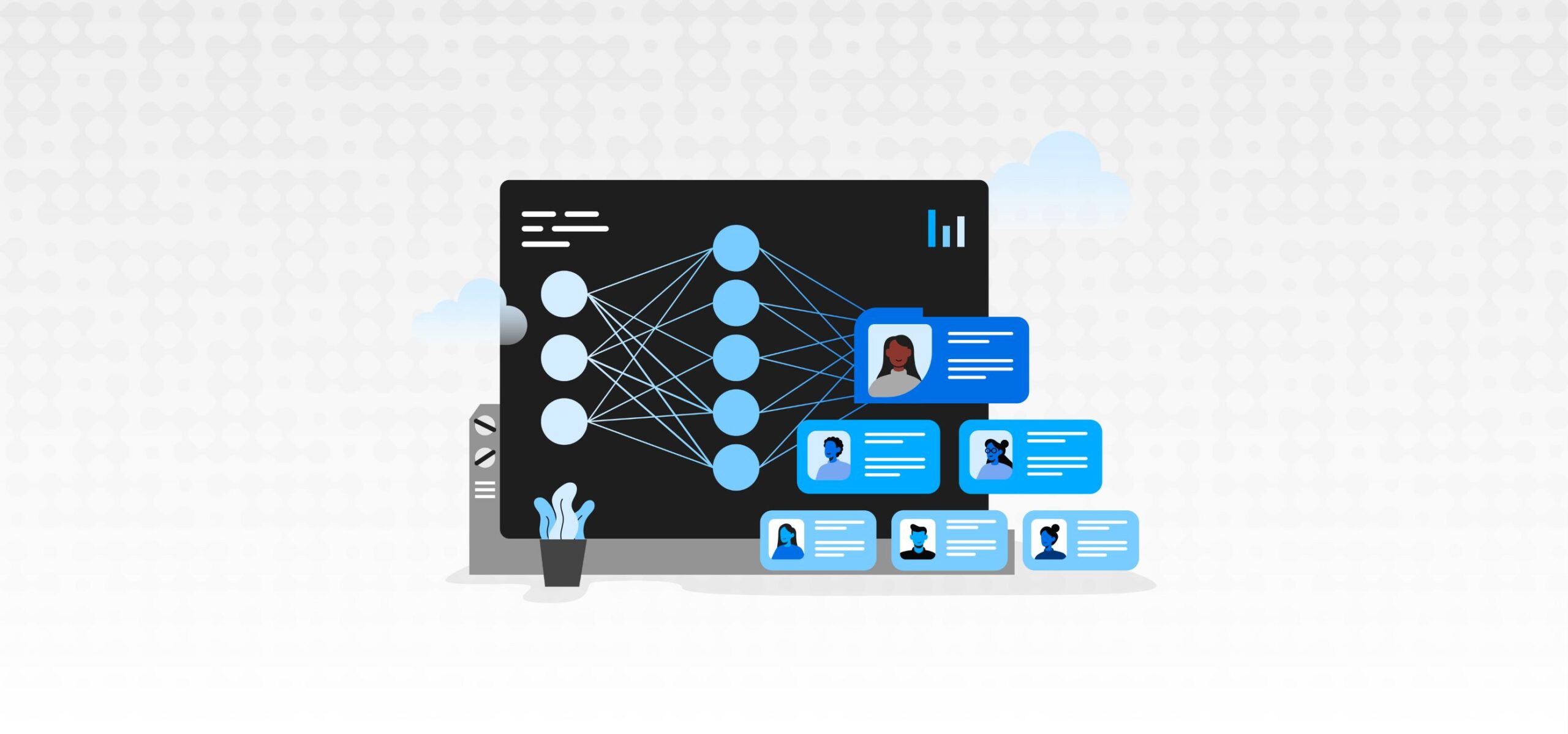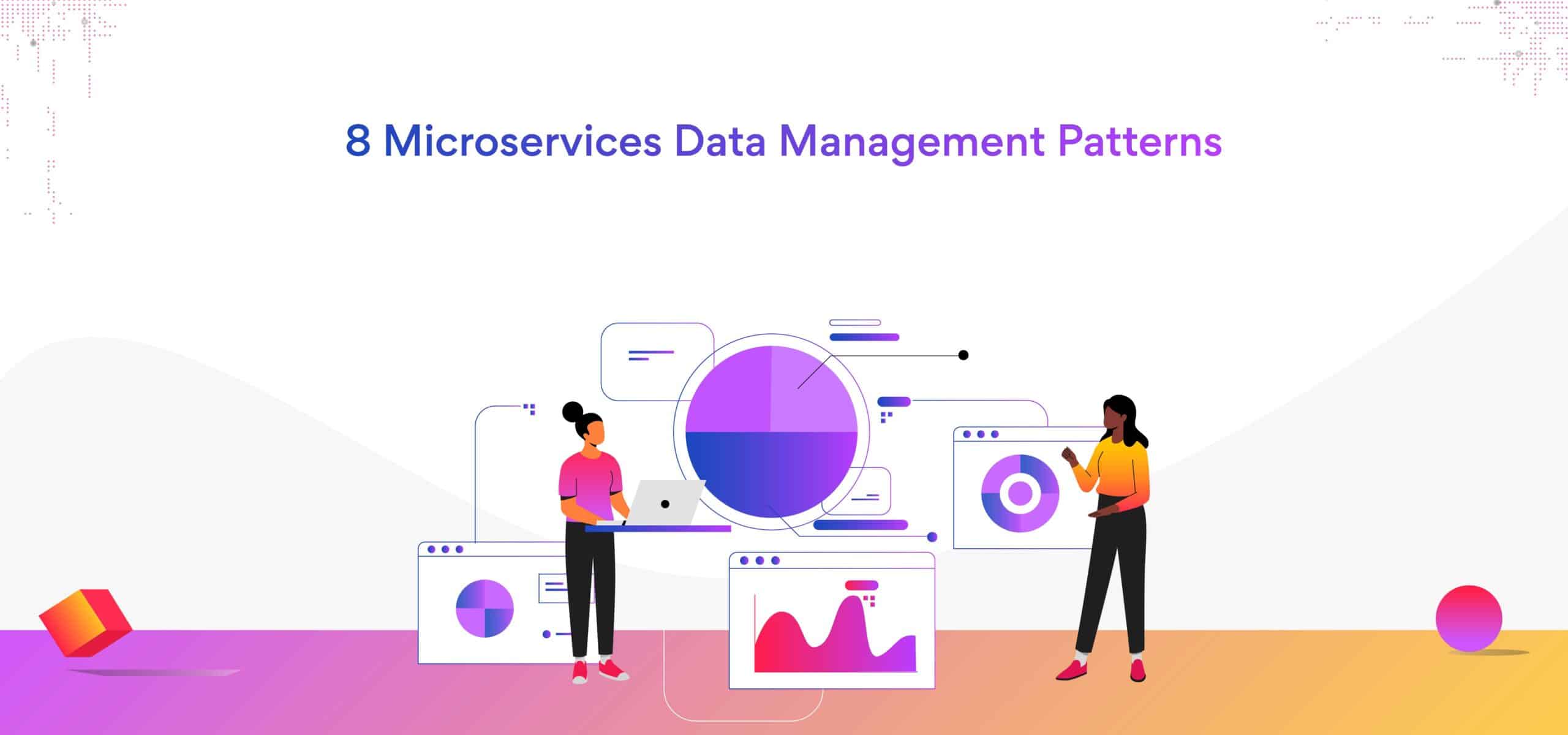Top 10 Machine Learning Algorithms for Beginners
What are machine learning algorithms? How do machine learning algorithms work? What are examples of machine learning algorithms? Which algorithm is best for machine learning? Keep reading this blog post to find out.
Machine Learning is a subset of Artificial Intelligence. ML imitates the human learning process and helps us automate tasks. In addition, ML assists in decision-making, pattern recognition, risk assessment, image classification, predictive analysis, data processing, and a lot more.
What are machine learning algorithms?
Machine learning algorithms are a set of instructions that guide a computing system to process historical data and produce the output within a given range. Prediction, classification, regression, forecasting, and data modeling are some of the major applications of machine learning algorithms.
Types of machine learning algorithms
- Supervised learning
- Unsupervised learning
- Semi-supervised learning
- Reinforcement learning
List of popular machine learning algorithms:
-
Linear regression (Supervised Learning/Regression)
Linear regression is a simple and popular machine learning algorithm commonly used for predictive analysis. Logistic regression allows users to study the relationship between dependent and independent variables by defining a line and its equation. This line is the regression line, and its linear equation is y=mx+c.
Here, y is the dependent variable, x is the independent variable, m is the slope of the line, and c is the intercept. The m and c are calculated by minimizing the sum of the squared distance between the two points and the regression line.
This linear regression algorithm is commonly used to predict stock market movements. -
Logistic regression (Supervised learning – Classification)
Logistic regression is a supervised machine learning algorithm that uses binary values (0 and 1) from a set of independent variables. Logistic regression predicts categorical and discrete values. This algorithm comes in handy to solve classification problems and predict the probability of an event.
ML experts also use logistic regression for binary classification of data and fraud detection.
Logistic regression uses a transformation function. The logistic function h(x) = 1 / (1 + ex) forms an S-shaped curve that lies between 1 and 0. Logistic regression is applied to predict the probability of a yes/no event, such as whether or not a patient has a heart attack, whether or not a debtor will default, and more. -
Decision tree (Supervised Learning – Classification/Regression)
The decision tree is a machine learning algorithm that classifies both categorical and continuous dependent variables. The decision tree divides the data into two or more similar sets based on the attributes and variables.
A decision tree starts with a root node and ends with a leaf node. The branches show the decision rules/conditions, the internal node represents the dataset features, and the leaf node represents the output.
The decision tree algorithm has real-world applications like identifying cancerous and non-cancerous cells, suggesting products and services to potential buyers, and more.
Related Post: What is Machine Learning Ops (MLOps)? How to get started? -
Support vector machine (Supervised Learning – Classification)
Support vector machine is a classification algorithm that allows you to plot raw data as points in an n-dimensional space. N represents the number of features you have defined. The value of each feature is associated with specific coordinates.
The SVM algorithm creates a hyperplane or a decision boundary that separates data sets into different classes. The support vectors are the data points that define the hyperplane. Classifiers split the data and plot those data points on a graph.
Support vector machines have real-life applications, such as image classification, face detection and identification, drug discovery, and more. -
Naive Bayes (Supervised Learning – Classification)
The Naive Bayes algorithm is based on the Bayes theorem – calculate the probability that an event may occur. The algorithm is naive because the variables are independent of each other. The Naive Bayes is a supervised machine learning algorithm that is based on conditional probability.
Here is the equation…
P(A|B) = P(B|A) * P(A)P(B)
Here P(A|B) = posterior probability. Posterior probability calculates the probability of event A for data B is calculated.
P(B|A) is the likelihood, i.e., the probability of data B if event A occurs. P(A) is class prior probability, and P(B) is predictor prior probability.
The Naive Bayes algorithm is ideal for large datasets, such as text classification.
Related Post: Artificial Intelligence vs Machine Learning vs Deep Learning: What’s the Difference? -
K-nearest neighbors (Supervised Learning)
The K-nearest neighbors are a supervised learning algorithm for the classification and regression of data. This algorithm estimates the likelihood of a data point being a member of one or another group. To determine the group of data points, the overall points are analyzed with reference to a single data point.
The K-nearest neighbors algorithm assumes similarities between new and available data points to classify them. The Euclidean distance between data points on a graph classifies them into separate categories. KNN is applied for text mining, agriculture, finance, medical, facial recognition, and more.
KNN is also a lazy-learner algorithm, as it uses the entire dataset as its training set. -
K-means clustering (Unsupervised Learning – Clustering)
The K-means is an unsupervised machine learning algorithm that can solve clustering problems. Datasets are classified into K-number clusters based on their similarities and differences between other data points. The process is repeated continuously until data points are assigned to each cluster.
Centroids are the center point of each cluster, and the distance from each data point to the centroids is calculated. The data point is assigned to a cluster that is nearest to the centroid. The algorithm then creates new centroids and repeats the process until centroids are not interchanged.
The k-means clustering algorithm is applied for market segmentation, document clustering, image segmentation, image compression, and more. -
Random forest (Supervised Learning – Classification/Regression
The random forest algorithm follows ensemble learning techniques to combine multiple algorithms and achieve better results. The random forest is a collection of decision trees that classifies new objects according to their attributes. The trees vote for a class, and the forest selects the classification that has the majority votes.
The decision trees represent individual subsets of data and calculate the average to improve the accuracy of the prediction/classification model. The random forest ideally contains 64-128 trees. The input is entered at the top of the decision tree. Then, the input travels down to the subsets based on the attributes/variables.
Random forest algorithm is applied for predicting customer behavior, consumer demand, market fluctuations, fraud identification, diagnosis, and more. -
Apriori algorithm (Unsupervised Learning)
The apriori algorithm is an unsupervised learning algorithm that can solve association problems. The association problems are aimed at finding interesting associations and relationships among large sets of data items.
The apriori algorithm uses frequent item sets to generate association rules that determine how strongly two objects are connected to each other. This algorithm works on databases, which contain transactions or similar forms of comparable information.
R. Agrawal and Srikant wrote the apriori algorithm in 1994. The algorithm uses a breadth-first search process and a hash tree to calculate item sets. To find frequent item sets from the larger dataset, the process is repeated continuously.
Some of the common applications Apriori algorithm include market basket analysis to find products that can be bundled together, drug reactions in patients, and more. -
Principal component analysis (Unsupervised Learning)
Principal component analysis is an unsupervised learning technique for dimensionality reduction. This algorithm reduces dataset dimensionality, i.e., it reduces the number of correlated features. The PCA follows a statistical process to convert observations of correlated features into linearly uncorrelated features.
PCA considers the variance of each attribute to check for low variance. A high variance displays better splits between the classes and reduces dimensionality.
The principal component analysis comes in handy for exploratory data analysis and predictive modeling. The applications of PCA include a movie recommendation system, image processing, power allocation optimization for electrical grids, and more.
Bottom line
A sound knowledge of machine learning algorithms can help you excel as an ML engineer. Knowing when to use a specific algorithm is very important for a machine learning engineer. Using the machine-learning algorithms mentioned above, ML engineers can start implementing ML systems for classification, regression, data analysis, modeling, and more.
Do you wish to work at a top US company as an ML engineer? Are you a machine learning enthusiast looking for high-paying remote jobs? Try Turing.
Turing offers high-paying remote machine learning jobs for developers across the globe. For more information, visit the Apply for Jobs page.
FAQs
-
How do machine learning algorithms work?
Machine learning algorithms rely on computational techniques to gather information from the data instead of using a predetermined equation as a reference model. The ML algorithms adapt and improve their performance as the sample data increases. The algorithms consider the input variables during training and find the best solution to a given problem. -
What are examples of machine learning algorithms?
Some of the common machine learning algorithms are linear regression, logistic regression, Naive Bayes, K-nearest neighbor, principal component analysis, random forest, support vector machine, and more. -
Which algorithm is best for machine learning?
Selecting the best algorithm for machine learning depends on your exact requirements, your sample/learning dataset, your expected format of output, classification/regression calculations, and a few other factors.
Join a network of the world's best developers and get long-term remote software jobs with better compensation and career growth.
